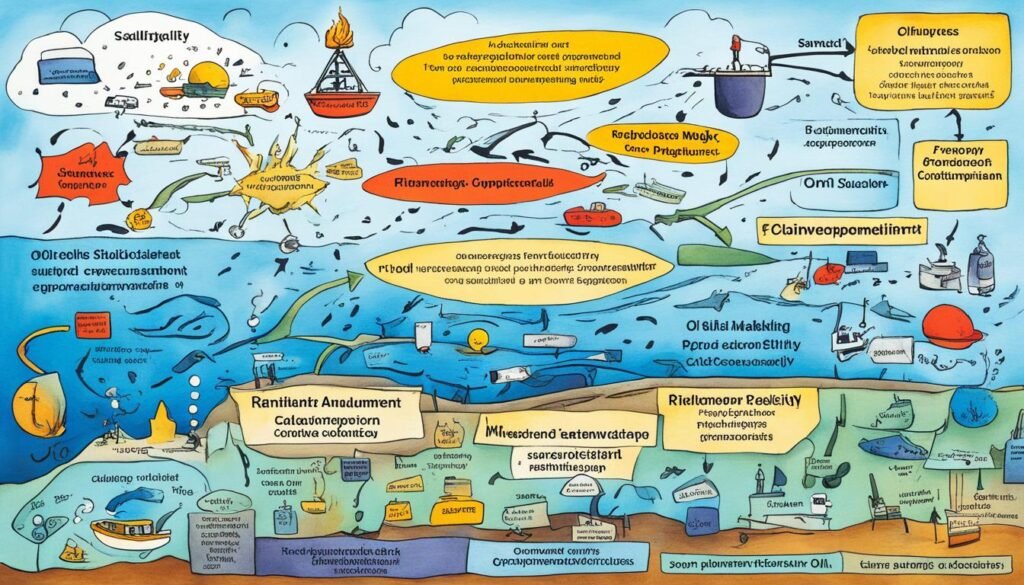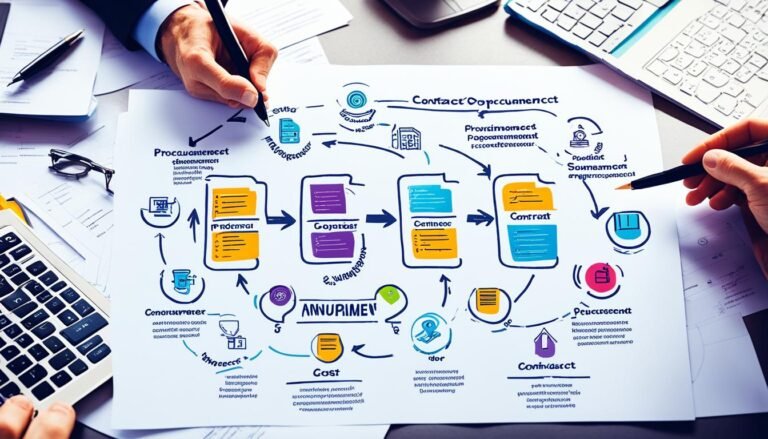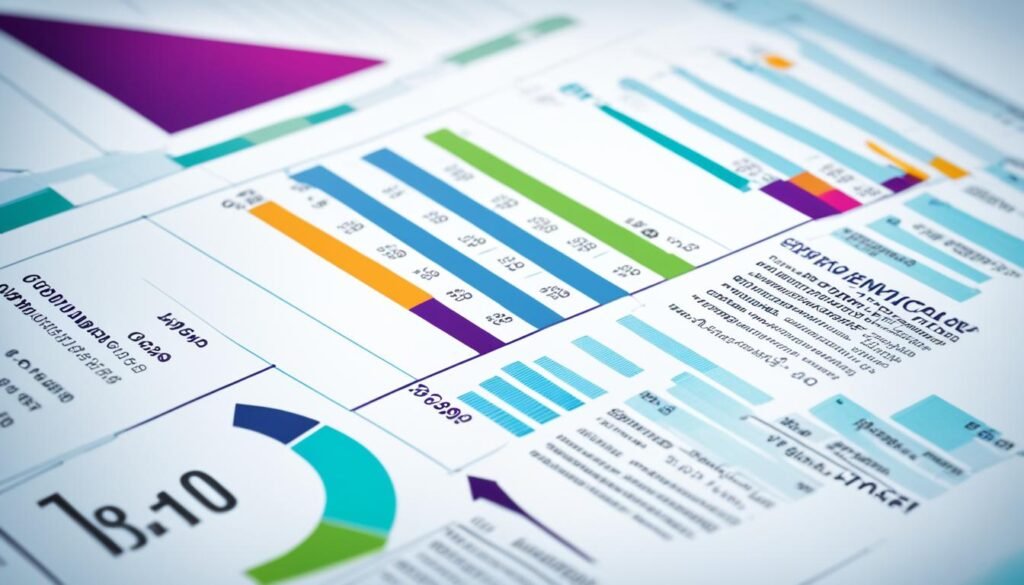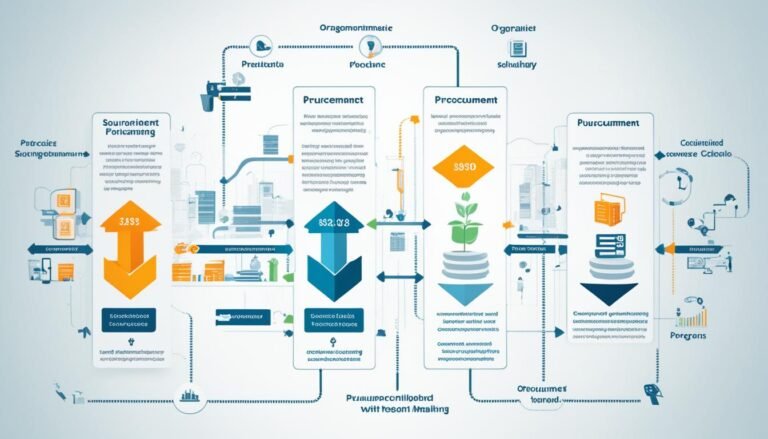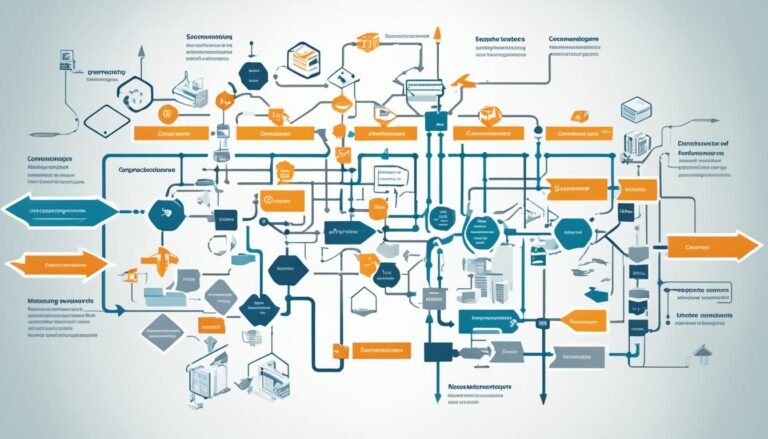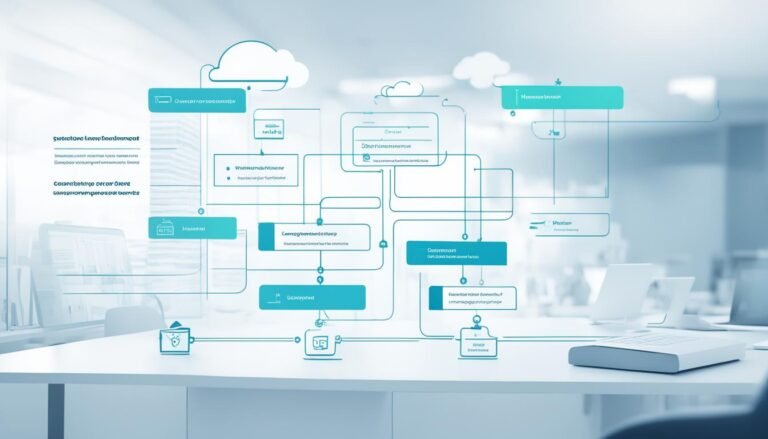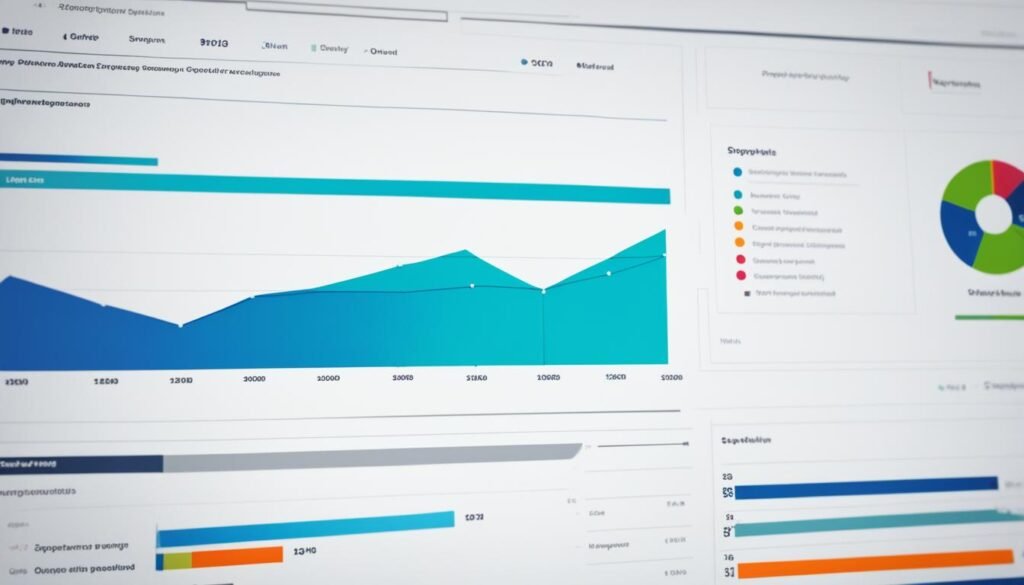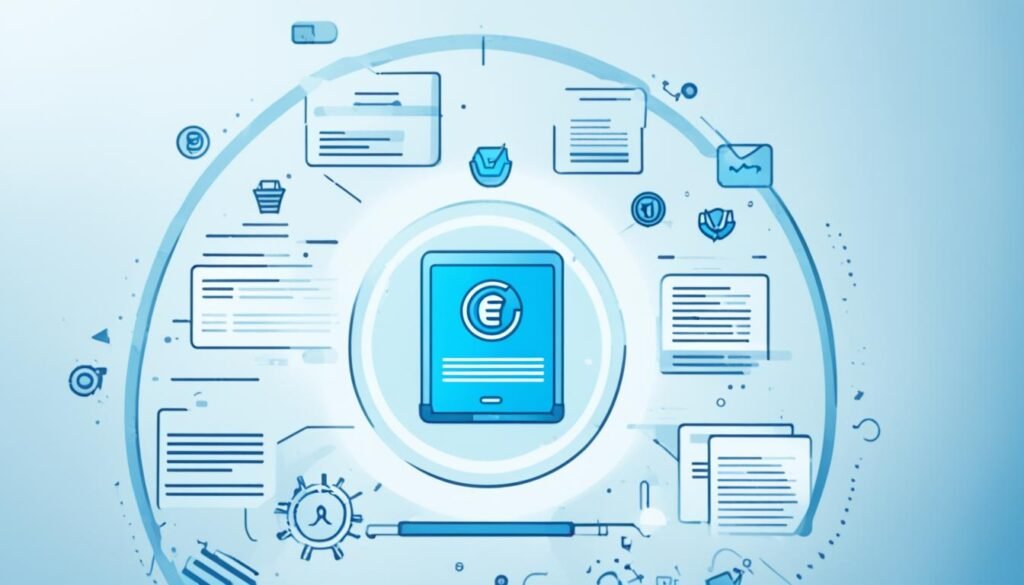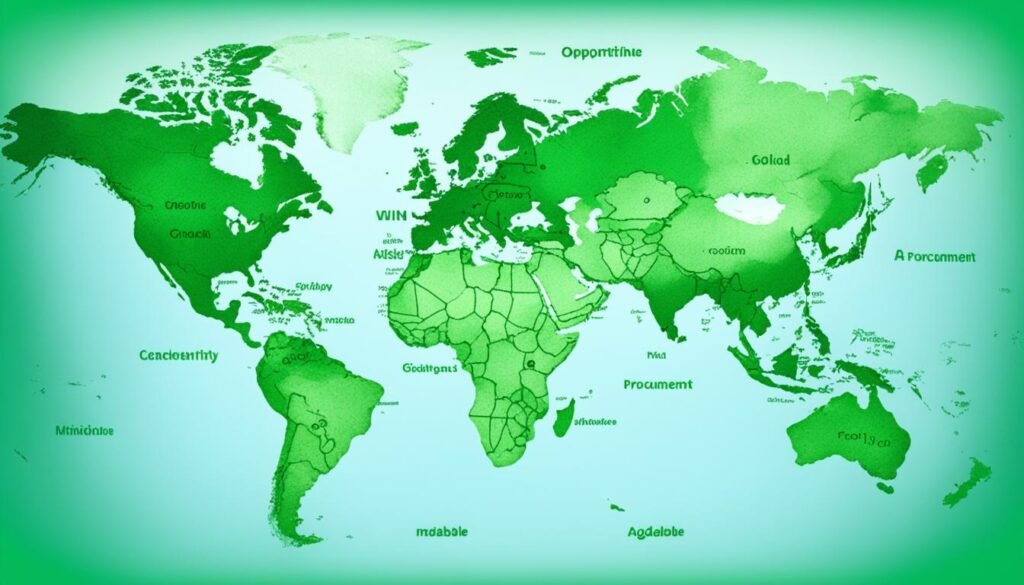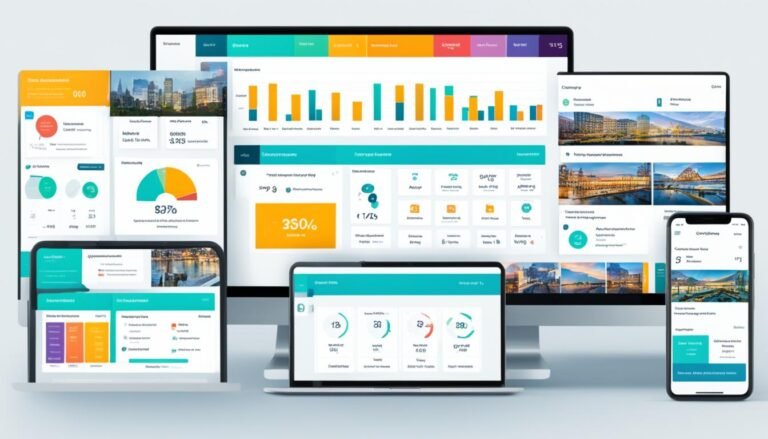Looking to optimize your spend and streamline operations to cut costs? Procurement digital solutions are the key to achieving these goals. By implementing digital procurement software, businesses can revolutionize their procurement processes, automate workflows, and effectively reduce expenses.
Procurement management software, such as SunSmart’s Procurement Management Software, enables organizations to gain full control over their spend, build strong supplier relationships, and achieve digital transformation. With its comprehensive features and intuitive interface, businesses can unlock new levels of efficiency and cost savings.
The Importance of Procurement Management
Many businesses still rely on manual workflows and paper-based procurement management, resulting in inefficiencies and increased costs. Manual procurement processes are time-consuming, prone to errors, and lack visibility, making it difficult for organizations to track spending and make informed decisions.
Procurement management software, such as SunSmart’s Procurement Management Software, offers a solution to these challenges. By digitizing and automating procurement processes, organizations can streamline their entire procurement function, from requisition to payment.
Streamline, Automate, and Optimize
With procurement management software, businesses can eliminate manual paperwork and repetitive tasks, reducing the risk of errors and delays. By automating workflows, the software enables faster and more efficient processing of purchase orders, invoices, and other procurement tasks.
Moreover, procurement management software optimizes the procurement process by providing centralized visibility into spend data, supplier information, and contract details. This enhanced visibility allows organizations to negotiate better terms with suppliers, identify cost-saving opportunities, and make data-driven decisions.
Control Spend and Build Strong Supplier Relationships
With manual workflows, it can be challenging to track and control spend effectively. Procurement management software provides businesses with real-time insights into their spending patterns, enabling them to set budgets, monitor expenses, and detect potential cost overruns.
Furthermore, the software facilitates effective supplier relationship management by maintaining a comprehensive database of suppliers and their performance metrics. By evaluating supplier performance and fostering collaborative partnerships, organizations can reduce risk, ensure timely deliveries, and drive supplier accountability.
Achieving Digital Transformation
Implementing procurement management software is a crucial step towards achieving digital transformation within an organization. By digitizing procurement processes, businesses can reduce manual errors, eliminate paper-based inefficiencies, and improve overall operational efficiency.
In addition, procurement management software enables seamless integration with other business systems, such as finance and inventory management. This integration ensures data accuracy, reduces duplicate work, and facilitates better collaboration across departments.
In summary, procurement management software enables organizations to save money, create value, and drive efficiency by streamlining, automating, and optimizing their procurement function. By transitioning from manual workflows and paper-based procurement to digital solutions, businesses can enhance control over spend, build strong supplier relationships, and achieve digital transformation.
Key Features of Procurement Management Software
Procurement management software plays a crucial role in optimizing the procurement process for businesses. By leveraging this software, organizations can automate and streamline their workflows, leading to improved efficiency and cost savings. Let’s explore some key features that make procurement management software a valuable tool:
1. Procure-to-Pay Optimization
One of the primary features of procurement management software is procure-to-pay optimization. This feature automates the entire procurement workflow, starting from requisition all the way to payment. By digitizing and automating these processes, businesses can eliminate manual tasks, reduce errors, and accelerate the procurement cycle.
2. Supplier Management
Effective supplier management is essential for maintaining strong supplier relationships and ensuring collaboration. Procurement management software provides businesses with robust supplier management capabilities. These features enable organizations to monitor supplier performance, track interactions, and foster collaboration. With improved supplier management, businesses can strengthen their supply chain and enhance their overall procurement efficiency.
3. Category Management
Organizing and analyzing spend data is crucial for maximizing visibility and value in procurement. Category management features offered by procurement management software help businesses categorize and analyze their spend data effectively. By gaining insights into different spending categories, organizations can identify opportunities for cost savings, negotiate better pricing, and make informed procurement decisions.
Overall, procurement management software offers a comprehensive set of features that enable businesses to optimize their procurement processes. From procure-to-pay optimization to supplier management and category management, these features empower organizations to streamline operations, improve efficiency, and drive cost savings.

Benefits of Procurement Management Software
Implementing procurement management software brings numerous benefits to businesses. Companies that have implemented such software have experienced:
- Reduced lifecycle times: Purchase orders, invoice processing, and other procure-to-pay workflows are expedited, resulting in faster transaction processing and improved operational efficiency.
- Enhanced spend control: Procurement management software provides businesses with greater visibility and control over their spending. By automating spend analytics and tracking, organizations can identify opportunities for cost reduction and better allocate resources.
- Supply chain optimization: By streamlining procurement processes through software automation, businesses can minimize supply chain disruptions, improve supplier collaboration, and optimize inventory management.
- Improved access to supplier performance metrics: Procurement management software allows businesses to track and analyze supplier performance metrics in real-time. This visibility enables organizations to make data-driven decisions when selecting and evaluating suppliers.
- Decreased maverick spending: Maverick spending refers to unauthorized or non-compliant purchases that deviate from established procurement procedures. By implementing procurement management software, organizations can enforce compliance and reduce maverick spending, resulting in cost savings.
Overall, procurement management software empowers businesses to streamline operations, optimize spend, and achieve greater efficiency in their procurement processes. The seamless integration of digital tools revolutionizes traditional procurement methods, leading to increased productivity and significant cost reduction.
The Role of Digital Procurement in Operational Efficiency
The adoption of eProcurement systems has become widespread among MRO procurement teams, playing a vital role in enhancing operational efficiency. These digital procurement tools offer numerous benefits and contribute to cost reduction and streamlined processes.
One of the key advantages of eProcurement systems is improved spend visibility. By digitizing procurement processes, organizations gain better insights into their spending patterns and can make informed decisions to optimize their budget allocation. This increased visibility allows businesses to identify cost-saving opportunities and negotiate advantageous contracts with suppliers.
Additionally, eProcurement systems provide better management information, empowering businesses with real-time data and analytics. This enables organizations to track Key Performance Indicators (KPIs) related to procurement activities and make data-driven decisions to drive efficiency and cost savings. Leveraging timely and accurate information helps businesses manage supplier relationships effectively, identify potential risks, and seize strategic growth opportunities.
Another significant advantage of eProcurement systems is reduced order process costs. By automating manual processes, businesses can eliminate paper-based documentation and manual data entry, resulting in significant time and cost savings. The streamlined procurement workflow also reduces the risk of errors and delays, improving overall operational efficiency.
The speed of ordering is also greatly increased with eProcurement systems in place. These digital tools enable organizations to streamline the purchase requisition and approval process, facilitating faster order placement. This agility in ordering ensures timely delivery of goods and services, reducing operational downtime and improving customer satisfaction.
In addition to the benefits mentioned above, eProcurement systems provide visibility into off-contract spend, allowing organizations to better manage and track spending that falls outside of established contracts. This level of transparency helps mitigate financial risks and ensures compliance with procurement policies and regulations.
eProcurement systems not only improve operational efficiency but also eliminate internal complexities. By digitizing and automating procurement processes, businesses can improve collaboration, communication, and transparency both internally and externally. This results in a streamlined and efficient procurement function that adds value to the overall performance and success of the organization.
The Power of Data in Digital Procurement
Digital procurement is revolutionizing the way businesses make decisions by enabling data-driven decision-making. Through the use of digital tools and automation, organizations can optimize their procurement processes and achieve significant improvements in efficiency and cost reduction. One of the key advantages of digital procurement is the ability to leverage data analytics to enhance supplier relationship management and make more informed decisions based on accurate data.
Improved Supplier Relationship Management
With data analytics at their disposal, businesses can gain valuable insights into supplier performance, allowing them to identify areas for improvement and strengthen their relationships. By analyzing supplier data, organizations can assess factors such as delivery reliability, quality, and pricing, enabling them to make informed decisions about supplier selection and negotiation. This data-driven approach to supplier relationship management helps build strong, mutually beneficial partnerships that drive efficiency and cost savings.
Optimizing Procurement Processes with Data Analytics
Data analytics plays a crucial role in optimizing procurement processes. By analyzing historical procurement data and identifying patterns and trends, organizations can uncover opportunities for cost reduction and process improvement. For example, data analytics can help identify areas of maverick spending, allowing businesses to implement strategies to prevent it. Additionally, data analytics provides visibility into spending patterns, enabling organizations to negotiate better deals, consolidate suppliers, and implement more effective procurement strategies.
Empowering End-Users in Decision-Making
Digital tools and automation in modern procurement solutions empower end-users to contribute to decision-making. By providing access to real-time data and analytics, organizations enable their procurement teams to make informed decisions at every stage of the procurement process. This not only improves efficiency but also creates a sense of ownership and empowerment among end-users, resulting in better overall decision-making and more successful procurement outcomes.
Data-driven decision-making is at the core of digital procurement, and organizations that embrace this approach can unlock significant value and cost savings. By leveraging data analytics, businesses can optimize supplier relationship management, identify opportunities for cost reduction, and make informed decisions based on accurate data. The use of digital tools and automation streamlines processes and empowers end-users to contribute to procurement decision-making, ultimately driving better outcomes in the procurement function.
Maximizing Addressable Spend for Cost Optimization
Maximizing addressable spend is a crucial strategy for cost optimization. Addressable spend includes both discretionary spend, which is allocated to specific projects, and non-discretionary spend, which is committed to existing projects.
Businesses can implement various tactics to maximize addressable spend and reduce the risk of wasting money on low-value projects. One effective approach is to prioritize initiatives based on expected returns. By carefully evaluating potential projects and their potential impact on the bottom line, organizations can allocate their discretionary spend in a way that generates the highest value.
To ensure effective cost optimization, businesses should also create budgets and track spending. By setting realistic budgets and regularly monitoring expenditures, organizations can identify areas of overspending and take corrective action. This proactive approach helps minimize unnecessary costs and contributes to overall financial health.
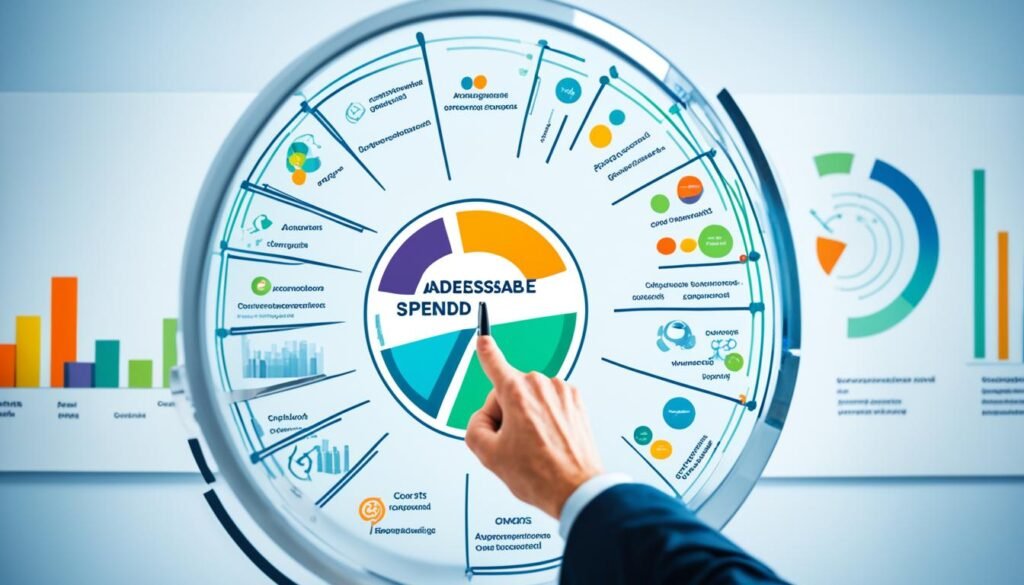
Moreover, strategic decision-making plays a vital role in addressing non-discretionary spend. By carefully reviewing ongoing projects and their associated costs, companies can identify opportunities for optimizing non-discretionary spend. This could involve renegotiating contracts with suppliers, exploring cost-saving alternatives, or identifying inefficiencies within existing processes.
Overall, by maximizing addressable spend and strategically managing both discretionary and non-discretionary spend, organizations can significantly reduce costs and mitigate the risk of financial waste. Implementing a structured approach to spend optimization ensures that financial resources are allocated efficiently and effectively, resulting in improved profitability and a competitive advantage.
Leveraging Software and Automation for Spend Management
Effective spend management is crucial for businesses striving to optimize their financial resources. By leveraging best-of-breed software and automation tools, organizations can streamline their processes, track spending, analyze data, and identify areas of waste. These technologies play a pivotal role in enabling businesses to make informed decisions and drive cost savings.
One key aspect of spend management is budgeting and forecasting. With the help of specialized software, businesses can create accurate budgets that align with their financial goals. These tools enable organizations to allocate funds efficiently, plan for future expenses, and ensure that spending remains within budget limits.
Additionally, spend analysis tools are essential for gaining insights into spending patterns and identifying areas where cost reduction is possible. By analyzing historical data, businesses can pinpoint where excessive spending occurs, leading to actionable strategies for optimization. These insights empower decision-makers to negotiate better deals with suppliers, consolidate purchasing power, and ultimately, reduce costs.
Automation tools are also instrumental in simplifying and accelerating the purchasing process. By automating routine tasks such as purchase order creation, invoice processing, and payment approvals, businesses can save significant time and resources. Automation minimizes manual errors, enhances efficiency, and ensures that spending remains in line with the budget set forth, contributing to accurate financial management.
The Benefits of Leveraging Software and Automation for Spend Management
- Enhanced Efficiency: By automating manual processes, businesses can allocate resources more effectively, allowing teams to focus on higher-value tasks.
- Real-Time Insights: Software and automation tools provide up-to-date data and analytics, enabling businesses to make informed decisions based on accurate information.
- Risk Mitigation: By enforcing spending limits and approval workflows, automation tools help reduce the risk of unauthorized or maverick spending.
- Improved Supplier Relationships: Automation tools enable businesses to track supplier performance, identify opportunities for collaboration, and negotiate favorable terms.
- Cost Optimization: Through spend analysis and budgeting capabilities, businesses can identify areas of waste, optimize spending, and achieve significant cost savings.
By embracing software and automation tools for spend management, businesses can effectively optimize their addressable spend, reduce costs, and drive financial success in an increasingly competitive marketplace.
Conclusion
In today’s competitive business landscape, procurement digital solutions play a vital role in optimizing spend and driving efficiency. By implementing procurement management software, businesses can streamline their operations, automate workflows, and effectively cut costs. These digital tools and automation enable organizations to make data-driven decisions, maximize their addressable spend, and ultimately achieve significant cost reduction.
Embracing procurement digital solutions empowers businesses to revolutionize their buying strategy and unlock substantial value and savings. With the help of procurement management software, companies can centralize their procurement processes, eliminating manual tasks and reducing the risk of errors. This streamlined approach leads to improved operational efficiency, faster cycle times, and enhanced visibility into supplier performance. By harnessing the power of technology, organizations can optimize their spend and achieve better outcomes in their procurement activities.
Furthermore, the use of procurement digital solutions enables businesses to leverage data analytics, leading to better supplier relationship management and informed decision-making. By analyzing procurement data, organizations can identify opportunities for cost reduction, negotiate more favorable contracts, and drive efficiencies across the supply chain. With procurement digital solutions in place, organizations can confidently navigate the complexities of procurement, position themselves for success, and achieve long-term competitive advantage.
FAQ
What are procurement digital solutions?
Procurement digital solutions are tools or software that organizations use to optimize their spend and improve operational efficiency. These solutions streamline procurement processes, automate workflows, and effectively cut costs.
Why is procurement management important?
Procurement management is important because many businesses still rely on manual workflows and paper-based procurement, which can lead to inefficiencies and increased costs. Procurement management software helps organizations save money by streamlining, automating, and optimizing the entire procurement function.
What are the key features of procurement management software?
Procurement management software offers a range of key features, including procure-to-pay optimization, which automates the entire procurement workflow from requisition to payment. It also includes supplier management capabilities to manage supplier performance and collaboration, and category management features to organize and analyze spend data for maximum visibility and value.
What are the benefits of procurement management software?
The adoption of procurement management software brings numerous benefits to businesses. Companies that have implemented such software have experienced reduced lifecycle times for purchase orders, invoice processing, and other procure-to-pay workflows. They have also seen enhanced spend control, supply chain optimization, improved access to supplier performance metrics, and a decrease in maverick spending.
How does digital procurement contribute to operational efficiency?
Digital procurement tools, such as eProcurement systems, contribute to operational efficiency by improving spend visibility, providing better management information, reducing order process costs, and increasing the speed of ordering. They also offer visibility into off-contract spend and eliminate internal complexity.
What is the role of data in digital procurement?
Data plays a crucial role in digital procurement as it enables data-driven decision-making. By leveraging data analytics, organizations can improve supplier relationship management, identify cost reduction opportunities, and make informed decisions based on accurate data. Digital tools and automation streamline processes and empower end-users to contribute to procurement decision-making.
How can businesses maximize addressable spend for cost optimization?
Maximizing addressable spend is a crucial strategy for cost optimization. Addressable spend includes both discretionary spend, allocated to specific projects, and non-discretionary spend, committed to existing projects. By prioritizing initiatives based on expected returns, creating budgets, and tracking spending, businesses can make informed decisions and reduce the risk of wasting money on low-value projects.
How can software and automation help with spend management?
Best-of-breed software and automation tools play a vital role in effective spend management. These tools enable businesses to create budgets, track spending, analyze data, and identify areas of waste. Automation tools streamline the purchasing process, ensure spending is within budget, and allow for quick adjustments. By leveraging these technologies, organizations can optimize their addressable spend and drive cost savings.
How do procurement digital solutions help businesses optimize spend?
Procurement digital solutions are essential for businesses looking to optimize spend and improve efficiency. By implementing procurement management software, businesses can streamline operations, automate workflows, and cut costs effectively. Digital tools and automation enable data-driven decision-making, maximize addressable spend, and ultimately drive cost reduction. Embracing these solutions empowers organizations to revolutionize their buying strategy and achieve significant value and savings.



